The week at a glance
- Oriental Turtle Dove, possible Wilson's Snipe and Bufflehead again in Cornwall
- Buff-bellied Pipits in Cork and Wexford
- Isabelline Wheatears in East Yorkshire and Glamorgan
- Spectacled Warbler in Hampshire
- Pine Buntings on Scilly and Shetland
- Brown Shrike still in Argyll
- Steppe Grey Shrike still in Shropshirehire
- Black Scoter still in Northumberland
- Wilson's Snipe and Northern Waterthrush still on Scilly
- Possible Black-bellied Storm-petrel in Suffolk
November can sometimes be quiet for new arrivals but always seems to produce quality over quantity. This week was no exception, with plenty of rarity interest.
In Cornwall, a great run of birds in the Nanjizal valley included an Oriental Turtle Dove in fields there on 6th and the relocating Porthgwarra Desert Wheatear on 7th–9th, while nearby a juvenile Pallid Harrier was at Polgigga on 6th. The dove would perhaps have been more popular if last winter's Oxfordshire bird hadn't been so accommodating, but few were tempted to make the long trip down for this first for Cornwall. Also in Cornwall, the immature or female Bufflehead was relocated on Helston Loe Pool on 7th–9th, though remained very flighty. There was also a report of a possible Wilson's Snipe at Marazion Marsh on 9th, though this has yet to be confirmed.

Desert Wheatear, Nanjizal Valley, Cornwall (Photo: Alex Mckechnie)
Desert Wheatear, Nanjizal Valley, Cornwall (Video: chippler01)
In Ireland, the annual run of Buff-bellied Pipit records included birds at Carne (Wexford) on 5th and Ballycotton (Cork) on 5th–8th, with the latter site also holding American Golden Plover and White-rumped Sandpiper.
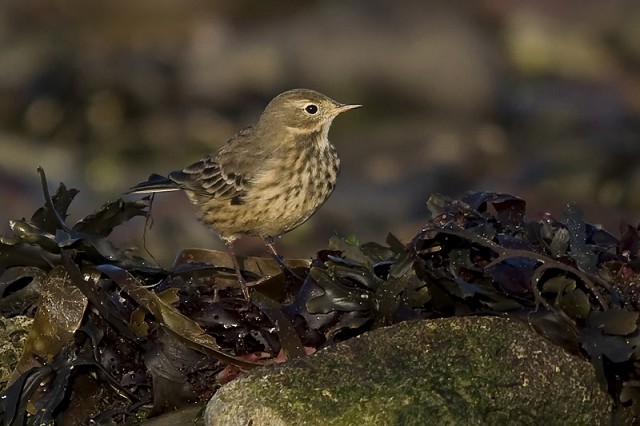
Buff-bellied Pipit, Ballycotton, Cork (Photo: Ronan McLaughlin)

White-rumped Sandpiper, Ballycotton, Cork (Photo: Ronan McLaughlin)
A probable Isabelline Wheatear at Spurn (East Yorks) on 4th was later confirmed in the hand and stayed in the area to 5th, allowing many to catch up with this second for the county (the first was at nearby Kilnsea in October 1990). Amazingly, this was followed by a Pied Wheatear at the Point on 8th–9th: just the fifth for the county, four of which have now been in the Spurn/Kilnsea area. A second Isabelline Wheatear was also at Wernffrwd on the Gower peninsula (Glamorgan), showing exceptionally well on 5th–9th. This is the first record for the county and just the fifth for Wales. Both these birds are rather late, with most records coming from October. In fact, of the accepted records, only the British first on 11th November 1887 was later; two of the next five records also stayed into November, but none has since.

Isabelline Wheatear, Spurn, East Yorkshire (Photo: Chris Gomersall)

Isabelline Wheatear, Wernffrwd, Gower, Glamorgan (Photo: Stevehinton)
Isabelline Wheatear, Wernffrwd, Gower, Glamorgan (Video: TheMarkhip)
The pattern of an autumn of suppressed and inaccessible birds was followed by late news of a male Spectacled Warbler in a private area of the New Forest (Hants) on 29th–30th October. There are just five accepted records, so this would have proved a very popular bird.
A female Pine Bunting at Clibberswick (Unst, Shetland) on 5th–7th confirmed the Northern Isles' draw for the species: there are four previous records from Shetland, nine from Fair Isle and 10 from Orkney, eight of which are from North Ronaldsay. At the opposite end of the country, one heard calling and seen briefly in flight on St Mary's (Scilly) on 6th was just the third for the islands, following birds in April 1983 and November 1985.

Pine Bunting, Clibberswick, Unst, Shetland (Photo: Robbie Brookes)
Both the big shrikes remained: the first-winter Brown Shrike at Balephuil, Tiree (Argyll) to 7th and the Steppe Grey Shrike at Wall Farm (Shropshirehire) to 9th. Also staying put were the Wilson's Snipe and Northern Waterthrush at Lower Moors (St Mary's, Scilly) all week, and the drake Black Scoter at Cheswick Sands (Northumberland) to 7th.
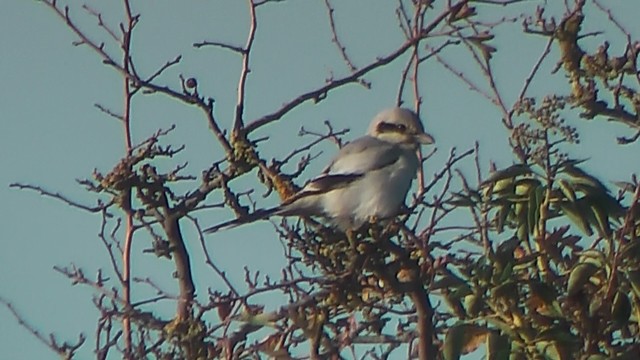
Steppe Grey Shrike, Wall Farm NR, Shropshirehire (Photo: Philip John Parsons)
Reasonable sea passage was seen during the week in the North Sea, but the highlight was a Fregetta petrel that headed north past Kessingland (Suffolk) on 7th and was possibly a Black-bellied Storm-Petrel. Late news also surfaced this week of a Yellow-billed Cuckoo photographed in a garden in Ballycogley (Wexford) in October.
There were no reports from Islay, but records of Richardson's Canada Geese included three at Lissadell and Ballygilgan (Sligo) on 6th–8th and one on Malin Head (Donegal) on 6th. The bird of unknown origin remained at Chew Valley Lake (Somerset) to 4th, though it appeared to have been reidentified as a Cackling Canada Goose. The Todd's Canada Goose also remained at Pilling Lane Ends (Lancs) to 6th. The only Snow Goose reported was the resident bird at Craobh Haven (Argyll), while a blue-morph Ross's Goose was at Watton and Tophill Low (East Yorks) on 6th–9th. A first-winter Red-breasted Goose with Canadas at Exminster Marshes (Devon) on 5th–8th appears to be the Dorset bird relocating, and one at Cowbar and Boulby (Cleveland) on 9th was presumably the Scaling Dam Reservoir bird of last week. The feral bird also remained at Corsham Park (Wilts) to 8th. Two Ruddy Shelducks were at Freiston Shore (Lincs) on 3rd, two were at Slimbridge (Glos) on 6th–7th and a singleton was with seven Shelducks on St Agnes (Scilly) on 7th. There are very few records for the islands: this is the first since 1994. Both Black Brants remained at Ferrybridge (Dorset) to 6th, and singletons were at Wexford Wildfowl Reserve (Wexford) on 5th–8th, Frampton Marsh (Lincs) on 6th–8th and Burnham Overy and Wells-next-the-Sea (Norfolk) on 7th–8th.

Black Brant, Wexford Wildfowl Reserve, Wexford (Photo: Paul Kelly)
American Wigeon remaining from last week included birds at Wellington Gravel Pits (Herefordshire) to 5th, Dawlish Warren (Devon) to 7th and Rutland Water to 8th, while the drake also returned to Loch Be, (South Uist, Outer Hebrides) on 6th. The only new birds were drakes at Idle Valley NR (Notts) on 6th and Anglers Country Park (West Yorks) on 9th. The resident drake Black Duck was again on Achill Island (Mayo) and presumably the same Marbled Duck as that seen in Lancashire last week was at Martin Mere on the afternoon of 7th.
Drake Green-winged Teal remained at Benacre (Suffolk) to 7th and Tacumshin (Wexford) to 4th, while a brave call was a female on Big Pool, St Agnes (Scilly) on 5th–8th. The flock of Ring-necked Ducks at Lough Gara (Sligo) grew to three drakes and two females this week,; the only others were at Blagdon Lake (Somerset) on 8th and Cockshoot Broad (Norfolk) on 6th, where the female Ferruginous Duck also remained. Both species also remained at Chew Valley Lake (Somerset) most of the week, where there was also a Grey Phalarope and an adult drake Lesser Scaup on 3rd–4th. The Lesser Scaup is the fifth for the county, though the first four records probably all refer to the same returning individual. A Lesser Scaup also remained at Marden Quarry (Northumberland) to 9th and another possible was at Frodsham Marsh (Cheshire) on 9th. Drake Ferruginous Ducks also remained at Far Ings (Lincs) to 7th and Dinton Pastures (Berks) to 9th, but the bird at Lurgan Park Lake (Armagh) is considered by some observers to be a hybrid.
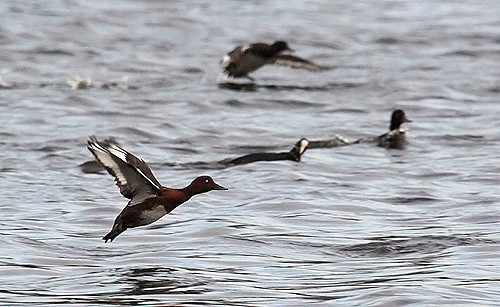
Ferruginous Duck or hybrid, Lurgan, Armagh (Photo: Derek Charles)
At sea, the drake King Eider remained in the harbour at Burghead (Moray & Nairn) to 8th and Surf Scoters were at Lahinch (Clare) to 6th, Llanddulas (Conwy) on 6th, Ballinskelligs (Kerry) on 6th–7th and off Rerwick Head (Orkney) on 6th. There was also a drake Northern Eider off Tarbat Ness (Highland) on 7th and a White-billed Diver in Bluemull Sound (Shetland) on 7th.
Apart from two past La Coupe (Jersey) on 6th, reports of single Balearic Shearwaters came from Cornwall, Dorset and Norfolk. Single late Leach's Storm-petrels were reported past Kilnsea (East Yorks) on 7th and heading inland from Salthouse (Norfolk) on 6th. All the week's Sabine's Gulls were in England, with birds at nine widely spread sites, including an inland adult still at Shapwick Heath (Somerset) to 6th. Reports of Grey Phalaropes were slightly up this week; coastal birds were seen from 10 sites, including four off Arranmore Island (Donegal) on 5th and three past Cley Marshes on 8th, and inland birds were at Chew Valley Lake (Somerset) all week, Orgreave Lagoons (South Yorks) on 3rd and Ferry Meadows (Cambs) on 9th.
In Shetland, the two Great White Egrets remained on Whalsay to 5th, and one on Out Skerries on 7th was presumably one of these birds. Other reports then came from numerous sites across the country, though birds were noticeably absent from the east coast north of Suffolk. There were two birds at Sheppey (Kent), Dungeness (Kent) and Wernffrwd, Gower (Glamorgan). Cattle Egrets remained at Thorney Island (West Sussex) to 6th and Blakeney Freshmarsh (Norfolk) to 7th, and another continued to wander between Slimbridge, Frampton-on-Severn and Lydney (Glos) to 5th. New birds were at Sunk Island (East Yorks) on 7th and on the Camel Estuary (Cornwall) on 8th. The juvenile Squacco Heron also remained at Attenborough Nature Reserve (Notts) to 8th and there was a late report of a juvenile Night Heron at Swinbridge (Devon) on 29th October. In Cornwall, a White Stork flew over Redruth on 5th. The Glossy Ibis remained at Filey Dams (North Yorks) all week and, further south, birds were reported from eight sites, including new birds at Wexford Wildfowl Reserve on 5th, in Plymouth Sound (Devon) on 5th–8th and on Pett Level (East Sussex) on 8th, and two were at Huntspill (Somerset) on 5th.
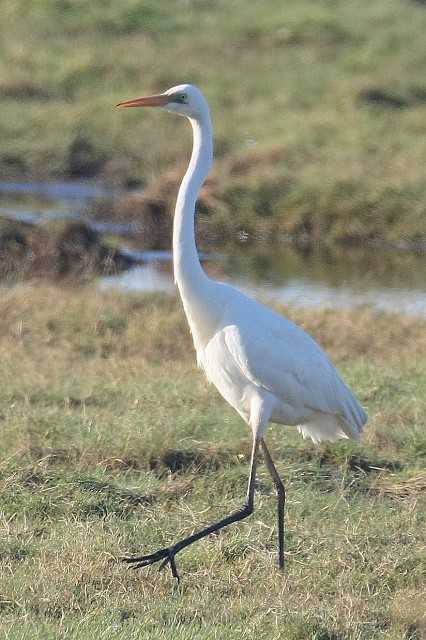
Great White Egret, Campfield Marsh RSPB, Cumbria (Photo: Alister Lynn)

Cattle Egret, Thorney Island, West Sussex (Photo: Mickd)
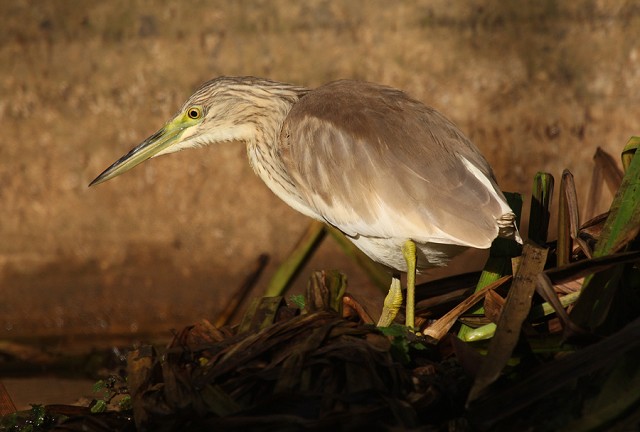
Squacco Heron, Attenborough NR, Nottinghamshire (Photo: Dave Hutton)

Glossy Ibis, Filey Dams YWT, North Yorkshire (Photo: Ian Traynor)
The only Black Kite was over Portland (Dorset) on 6th. Ayrshirehire's first Pallid Harrier remained at Garnock Floods to 5th and others were again on Walland Marsh (Kent) on 4th and Inch (Cork) on 6th. Apart from the previously mentioned Cornish bird, others included potential county firsts over Plymouth (Devon) on 3rd, Benbecula (Outer Hebrides) on 6th and Holy Island (Northumberland) on 8th. Is there now any county without this species on its list? The Northern Harrier remained at Tacumshin (Wexford) to 6th and a "possible" was also at Wexford Wildfowl Reserve on 5th. There were surprisingly few Rough-legged Buzzards this week, birds being reported from just eight areas. Apart from one at Graven (Shetland) on 5th the others were in England: in Durham, Cleveland, Norfolk, Cambridgeshire and Kent.

Pallid Harrier, Bogside Flats & Racecourse, Ayrshirehire (Photo: Chas Moonie)
An American Golden Plover was at Butt of Lewis and Eoropie (Outer Hebrides) on 4th–8th and English birds were at Cockersand Abbey (Lancs) on 4th–5th and a possible at Alkborough Flats (Lincs) on 4th. In Ireland, singletons were reported from five sites in Counties Mayo, Cork, Wexford and Dublin. All of last week's Lesser Yellowlegs remained, on Alkborough Flats (Lincs) to 6th, Alaw Estuary (Anglesey) to 8th and Tresco (Scilly) to 9th. Similarly, both Spotted Sandpipers also stayed put, at Chew Valley Lake (Somerset) to 9th and Plym Estuary (Devon) to 9th. The juvenile Red-necked Phalarope also remained at Cley Marshes (Norfolk) all week.

Red-necked Phalarope, Cley Marshes NWT, Norfolk (Photo: Andy Thompson)
The two Long-billed Dowitchers were at Blagdon Lake (Somerset) all week, with one popping back to Chew Valley Lake on 8th. Elsewhere, one also remained at Wigtown (Dumfries & Galloway) to 8th and there was a report of two on Hayle Estuary (Cornwall) on 6th, though they couldn't be relocated. The only Semipalmated Sandpiper was at Sgarasta Mhor (Harris, Outer Hebrides) on 7th–8th, where there were also two White-rumped Sandpipers on 8th. Other White-rumps remained at Ballycotton (Cork) to 4th, Rutland Water to 6th and Tresco Great Pool (Scilly) to 7th, and new birds were at Aber Dysynni (Gwynedd) on 5th–7th, with two reported on 5th, North Boisdale, South Uist (Outer Hebrides) on 6th–9th, Seaton Marshes (Devon) on 7th–8th and Tacumshin (Wexford) on 7th. Tacumshin also hosted the week's only Baird's Sandpiper, which remained to 4th, and there were also a notable 20 Bearded Tits on 7th. The only remaining Pectoral Sandpipers were at Thurlestone (Devon) on 6th and on Great Pool, Tresco (Scilly) to 3rd.

White-rumped Sandpiper, South Uist, Outer Hebrides (Photo: Steve Duffield)
The Dungeness (Kent) Glaucous Gull remained all week and others included juveniles at Tory Island (Donegal) to 8th, Mulrany (Mayo) and Arranmore Island (Donegal) on 5th and past Flamborough Head (East Yorks) on 7th, and a second-winter in the harbour at Girdle Ness (Aberdeenshire) on 7th. Apart from a juvenile at Beddington Sewage Farm (London) on 8th, all the week's Iceland Gulls were again in Scotland, in Argyll, Aberdeenshire, Orkney and the Outer Hebrides. Second-winter Ring-billed Gulls remained at Groomsport (Down) and in Stornoway Harbour (Lewis, Outer Hebrides) all week, while a second-winter and first-winter were around Sligo most of the week. Adults also remained at Gosport (Hants) to 5th and Portrush (Antrim) to 6th and a new bird was in the roost at Pickerings Pasture (Cheshire) on 5th. A new first-winter was on Benbecula (Outer Hebrides) on 6th–8th. The probable adult Azorean Yellow-legged Gull was again at Rutland Water on 5th and Chasewater (Staffs) on 9th. On Scilly a juvenile American Herring Gull was on Tresco on 7th. In Ireland, the Forster's Tern returned to Doorus (Galway) on 6th for its ninth winter.
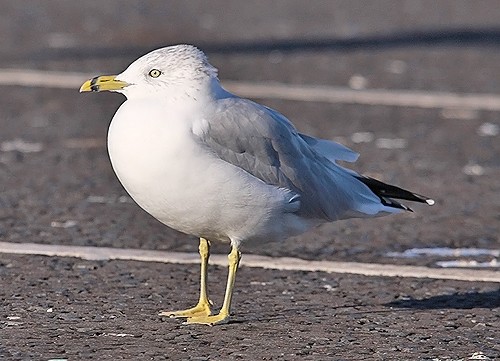
Ring-billed Gull, Portrush, Antrim (Photo: Derek Charles)
A Pallid Swift was over Aberystwyth (Ceredigion) on 4th and further possibles were reported from Durlston Country Park (Dorset) and Brinkworth (Wilts) on 4th. An obliging Hoopoe was at Climping (West Sussex) on 5th–9th and another was briefly at Warham Greens (Norfolk) on 9th. There were just three Wrynecks, at Neath (Glamorgan) on 4th, Hayling Island (Hants) on 5th–6th and St Govan's Head (Pembrokeshire) on 6th. The only Short-toed Lark remained on North Ronaldsay (Orkney) to 3rd, though there was a possible at dusk at Spurn (East Yorks) on 9th. Numbers of Shore Larks began to build in East Anglia, with five at Holkham Gap (Norfolk), four at Salthouse (Norfolk), two at The Naze (Essex) and one at Gibraltar Point (Lincs).

Common/Pallid Swift, St. Saviour's Reservoir, Guernsey (Photo: Mark Guppy)

Hoopoe, Climping, West Sussex (Photo: Dorian Mason)
Richard's Pipits were rather scarce this week; report came from Grimston (East Yorks) and Holkham Pines (Norfolk) on 5th, Knockadoon Head (Cork) and Dawlish Warren (Devon) on 6th and Sammy's Point (East Yorks) on 9th. The Olive-backed Pipit was on St Agnes (Scilly) to 7th and a single new bird was on Fair Isle on the same date. There were also just two Red-throated Pipits, both in Ireland on 4th: at Slyne Head (Galway) and Ballycotton (Cork).
Apart from one still on Carnsore Point (Wexford) to 6th, the only Red-backed Shrike was at Termoncarragh Lough (Mayo) on 4th. The pattern of records of Great Grey Shrikes remained rather unchanged, with two in Orkney, one in Aberdeenshire and a good spread of birds from North Yorkshire to Devon, including two at Thursley Common (Surrey) to 5th, two at Flamborough Head (North Yorks) on 7th and two at Spurn (East Yorks) on 7th–8th. The only remaining Daurian Shrike was the first-winter at Porth Clais (Pembrokeshire) to 7th, which continued to show well. There was just one Bluethroat, at Clibberswick, Unst (Shetland) on 6th.
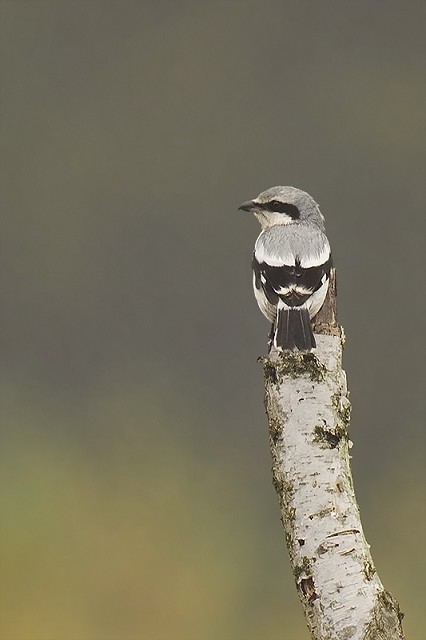
Great Grey Shrike, Thursley Common, Surrey (Photo: anon)

Isabelline Shrike, Porth Clais, Pembrokeshire (Photo: Derek Moore)
In addition to the Cornish bird mentioned above, other Desert Wheatears were on North Ronaldsay (Orkney) on 3rd–5th, at Girdle Ness (Aberdeenshire) on 4th and at Loftus (Cleveland) on 8th–9th (just the third for the county following birds in November 2000 and November 2005). The first flush of winter Waxwings arrived this week, with birds at numerous sites along the east coast from Shetland to Kent, including 18 at Dunwich Heath (Suffolk), 17 at Overstrand (Norfolk) and 10 at Scarborough (North Yorks). In the west, one was on Benbecula (Outer Hebrides) on 6th and inland birds were at Wakefield (West Yorks), Ivinghoe Beacon (Bucks), Stuntney (Cambs) and Eye (Suffolk).

Desert Wheatear, Girdle Ness, Aberdeenshire (Photo: Andrew Whitehouse)
On Fair Isle, there was a late Blyth's Reed Warbler on 5th (there are just two later records; on Portland on 12th November 2001 and at Quendale (Shetland) on 29th November 2009). Also rather late was a Melodious Warbler was at Happisburgh (Norfolk) on 8th–9th. At Lower Moors (St Mary's, Scilly), the Dusky Warbler remained to 5th and the adult Great Reed Warbler remained to 8th. There were seven new Dusky Warblers: in Shetland, Orkney, Aberdeenshire, Norfolk, Suffolk and Dorset, and a probable in Devon.
Pallas's Warblers moved south rather quickly and were restricted to 13 sites this week as far north as Great Orme (Conwy) and Trimingham (Norfolk), where there were two on 9th; two were also at Prawle Point (Devon) on 5th. Yellow-browed Warblers were still widespread, though, but the only inland bird remained at Newdigate (Surrey) to 5th. Three birds were recorded on St Mary's (Scilly) and Cape Clear (Cork) and twos were at Zennor and Kennack Sands (Cornwall), Hengistbury Head (Dorset) and Titchwell (Norfolk). The first Hume's Leaf Warblers of the year turned up on 8th, at Kergord (Shetland) and at a private site at Bawdsey (Suffolk — the third record for the county)There was another at Trimingham (Norfolk) on 9th, along with a Pallas's and Yellow-browed Warbler; a possible was at Torness Power Station (Lothian), though debate about that bird's identification is ongoing.

Pallas's Warbler, Dungeness RSPB, Kent (Photo: Martin Casemore)

Possible Hume's Leaf Warbler, Torness Power Station, Lothian (Photo: Mike Thrower)
The Barred Warblers remained in the Ballycotton/Knockadoon area (Cork) to 8th and at Porth Clais (Pembrokeshire) on 6th. On Scilly, the halimodendri Central Asian Lesser Whitethroat remained on St Agnes to 8th.

Barred Warbler, Ballycotton, Cork (Photo: Graham Clarke)
Red-breasted Flycatchers returned to County Cork, with birds at Knockadoon Head on 5th–7th and Mizen Head on 6th, and others were on Bardsey Island (Gwynedd) on 4th–5th and Portland (Dorset) on 5th. A Penduline Tit at Wintersett Reservoir (West Yorks) on 6th was the first for the county and three at St Ouen's Pond (Jersey) on 9th were almost as unexpected.

Red-breasted Flycatcher, Bardsey Island, Gwynedd (Photo: Ben Porter)

Penduline Tit, Wintersett Reservoir, West Yorkshire (Photo: Jeff Wragg)
The only Little Buntings were Irish, on Tory Island (Donegal) on 3rd and briefly at Power Head (Cork) on 6th. Plenty of Lapland Buntings remained around the coast this week, but the only double-figure count was of 21 at Warham Greens (Norfolk). The first Arctic Redpoll of the winter was in the unlikely location of Kilnsea (East Yorks) on 8th–9th, with another (or the same?) at Spurn Point on 9th. Also of note was a male Northern Bullfinch ringed at Shuart (Kent) on 9th. The juvenile Rose-coloured Starling remained at Nefyn (Gwynedd) to 4th and further new arrivals were at Power Head (Cork) on 6th, Mumbles Head, Gower (Glamorgan) on 8th–9th and at a garden feeder in Inverkeithing (Fife) on 7th.

Rose-coloured Starling, Nefyn, Gwynedd (Photo: Shirley Roulston)
Photo of the Week: 27th October–2nd November

Isabelline Shrike, Porth Clais, Pembrokeshire (Photo: Richard Stonier)
Normally, when a rare bird stays in one accessible location for over a week in the UK, it gets descended upon by hordes of birders and bird photographers all looking to 'fill their boots'. Judging by the number of photos of the Isabelline Shrike in Pembrokeshire this week, though, its remoteness from the majority of would-be snappers seems to have left the way open for the local photographers to steal the show. Bird photographer Richard Stonier, who has previously had Photos of the Week featuring birds in Norfolk and the Scilly Isles, obviously wasn't going to miss the opportunity to pop down and see this shrike only a few miles from his home. Making the most of some gorgeoous sunlight and a blue-sky backdrop, Richard bagged a great head-and-shoulders close-up of the first-winter bird deftly holding a wasp in its bill-tip. Fine detail in the bird and wasp round off a classic predator-and-prey shot!
Other notable photos
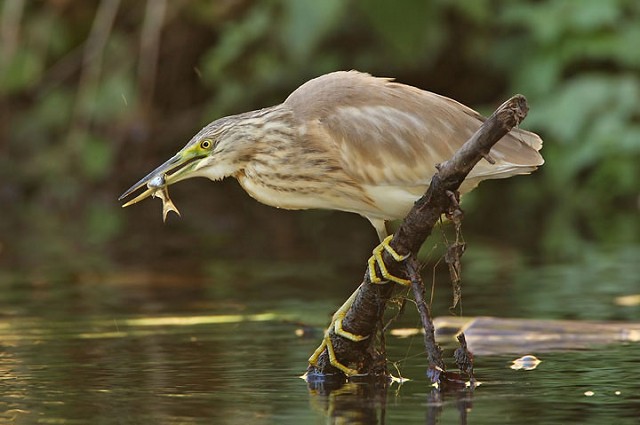
Squacco Heron, Attenborough NR, Nottinghamshire (Photo: John Dickenson)

Common Buzzard, undisclosed site, Gloucestershire (Photo: Pete Blanchard)

Sparrowhawk, Castle Douglas, Dumfries & Galloway (Photo: Keith Kirk)

Purple Sandpiper, North Warren RSPB, Suffolk (Photo: Jon Evans)
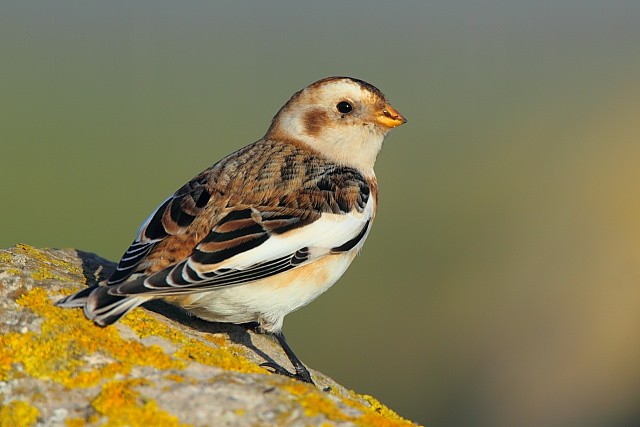
Snow Bunting, Lydney, Gloucestershire (Photo: Lewis Thomson)

Short-eared Owl, Bridgwater, Somerset & Bristol (Photo: Richard Collier)

Isabelline Wheatear, Wernffrwd, Gower, Glamorgan (Photo: Stevehinton)
Photo of the Week: 27th October–2nd November
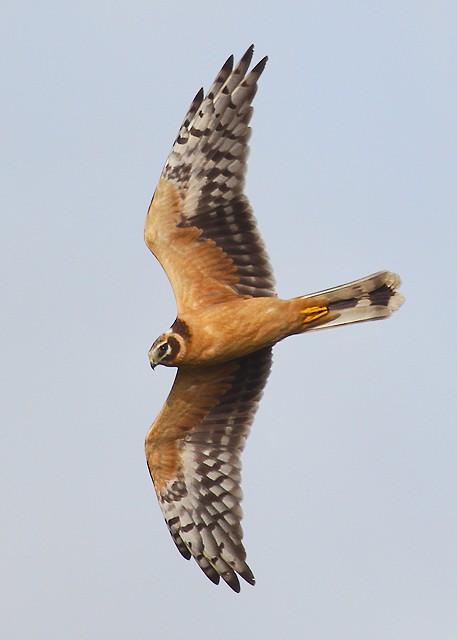
Pallid Harrier, Bogside Flats & Racecourse, Ayrshire (Photo: Chas Moonie)
Through our Photos of the Week, we try to highlight the variety of 'qualities' that make for a good avian image. These qualities are mainly the aesthetic characteristics that make for pleasing viewing or the way action has been frozen to reveal fascinating aspects of bird behaviour. In other words, they relate to the ability of the image to 'satisfy' its viewers. While art/illustration is a valuable purpose in its own right, some bird images have other types of value to birders/ornithologists. In past times, the main technique used to identify an unusual bird encountered in the field was to shoot it and bag it so that it could later be analysed by experts. Thankfully, in the 21st century, bird photography has now advanced to such a level that it provides an excellent alternative. A perfect example is Chas Moonie's stunning flight shot of a rare Pallid Harrier taken in Ayrshire this week. Chas initially thought this was a Hen Harrier as it was with a male of that species but, having captured such an incredibly detailed image, the local experts would have had no difficulty in confirming its true identity, enabling this record to be added to the overall distribution picture for this species. To cap it all, though, Chas managed to combine aesthetics, action and utility all into a single shot! A very worthy first PotW for Chas.
Other notable photos

Short-eared Owl, undisclosed site, Northamptonshire (Photo: Paul Riddle)
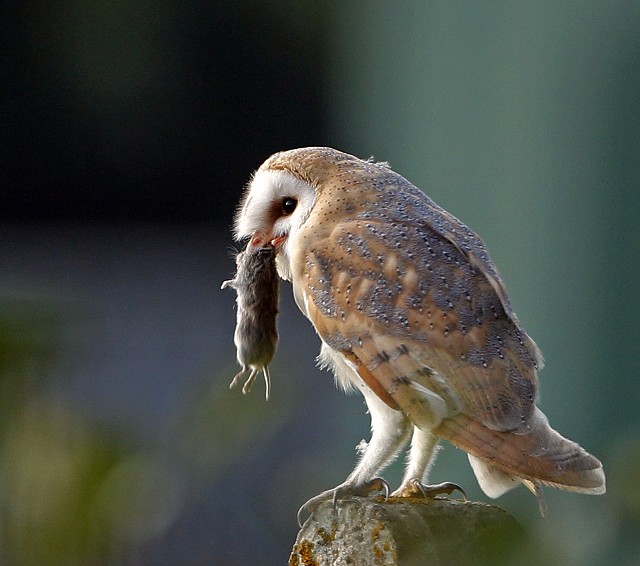
Barn Owl, undisclosed site, Suffolk (Photo: Ian Clarke)
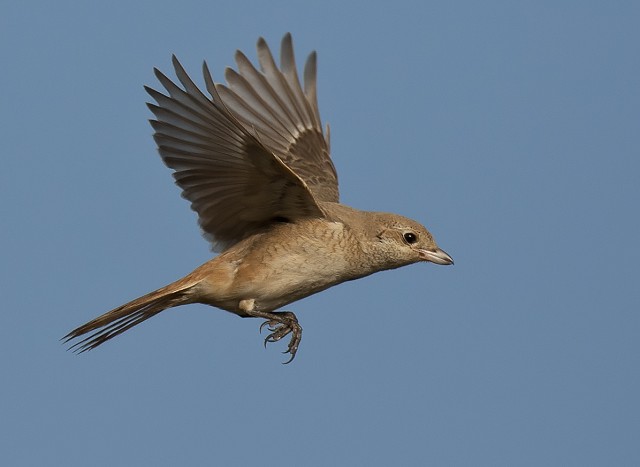
Isabelline Shrike, Horsey, Norfolk (Photo: Chris Darby)

Southern Grey Shrike, Dubai (Photo: Jamie MacArthur)

Green Woodpecker, Hengistbury Head, Dorset (Photo: Kev Joynes)

Common Kingfisher, undisclosed site, Kent (Photo: Tonyf)

Greenfinch, Wychbold, Worcestershire (Photo: Mark Hancox)

Great Shearwater, Scilly pelagic, Isles of Scilly (Photo: Mick Colquhoun)

Pygmy Owl, Poland (Photo: Karol Zub)

Rook, Mold, Clwyd (Photo: Richard Steel)

Purple Sandpiper, Scarborough, North Yorkshire (Photo: Steve Race)

Goosander, undisclosed site, Devon (Photo: Charlie Fleming)
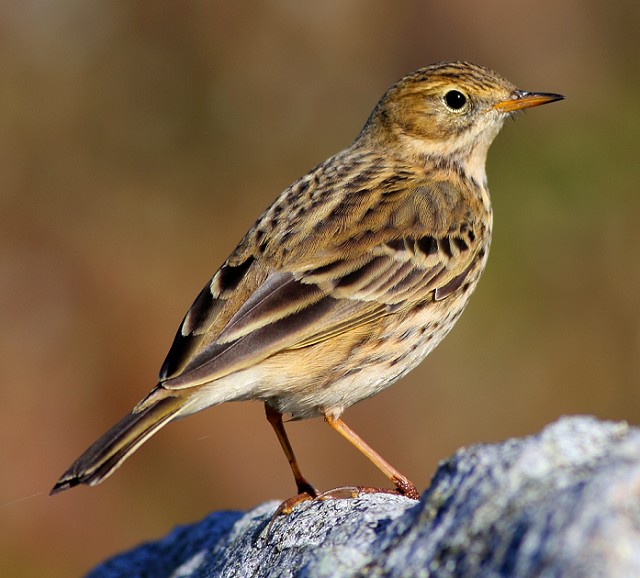
Meadow Pipit, Davidstow Airfield, Cornwall (Photo: Steve Turner)

